Enrichment and Purification of Total Ginkgo Flavonoid O-Glycosides from Ginkgo Biloba Extract with Macroporous Resin and Evaluation of Anti-Inflammation Activities In Vitro
Abstract
:1. Introduction
2. Results and Discussion
2.1. Screening of Resins for TGFs
2.2. Adsorption Kinetics
2.3. Adsorption Isotherms
2.4. Effect of pH Value of Sample Solution
2.5. Dynamic Desorption on AB-8 Resin
2.6. Anti-Oxidant Activities Analysis
2.7. Anti-Inflammation Activity Analysis
2.7.1. Cytotoxicity Effects of TGFs on Raw 264.7 Cells
2.7.2. Effects of TGFs on LPS-Treated Overproduction of NO in Raw 264.7 Cells
3. Experimental Section
3.1. Materials and Instruments
3.2. Determination of TGFs Content
3.3. Static Adsorption and Desorption Tests
3.3.1. Adsorption and Desorption Capacities, Desorption Ratio
3.3.2. Adsorption Isotherms
3.3.3. Dynamic Adsorption and Desorption Tests
3.4. Biological Evaluation
3.4.1. Reagents and Cell Culture
3.4.2. In Vitro Anti-Oxidant Activity
3.4.3. Cell Viability Assay
3.4.4. Anti-Inflammatory Assay
3.5. Statistical Analysis
4. Conclusions
Author Contributions
Acknowledgments
Conflicts of Interest
References
- Jager, A.K.; Saaby, L. Flavonoids and the CNS. Molecules 2011, 16, 1471–1485. [Google Scholar] [CrossRef] [PubMed]
- Suciu, S.; Olah, N.K.; Morgovan, C.; Toma, C.C.; Dărăban, A. Pharmacokinetic Drug-Herbal Dietary Supplements Interactions Clinically Significant; Vasile Goldis Unverisity Press: Arad, Romania, 2013; Volume 23, pp. 499–504. [Google Scholar]
- Singh, B.; Kaur, P.; Gopichand; Singh, R.D.; Ahuja, P.S. Biology and chemistry of Ginkgo biloba. Fitoterapia 2008, 79, 401–418. [Google Scholar] [CrossRef] [PubMed]
- van Beek, T.A.; Montoro, P. Chemical analysis and quality control of Ginkgo biloba leaves, extracts, and phytopharmaceuticals. J. Chromatogr. A 2009, 1216, 2002–2032. [Google Scholar] [CrossRef] [PubMed]
- Zhang, J.; Hayat, K.; Zhang, X.; Tong, J.; Xia, S. Separation and Purification of Flavonoid from Ginkgo Extract by Polyamide Resin. Sep. Sci. Technol. 2010, 45, 2413–2419. [Google Scholar] [CrossRef]
- Sun, Y.; Yuan, H.; Hao, L.; Min, C.; Cai, J.; Liu, J.; Cai, P.; Yang, S. Enrichment and antioxidant properties of flavone C-glycosides from trollflowers using macroporous resin. Food Chem. 2013, 141, 533–541. [Google Scholar] [CrossRef] [PubMed]
- Vien, L.T.; Van, Q.T.T.; Hanh, T.T.H.; Huong, P.T.T.; Thuy, N.T.K.; Cuong, N.T.; Dang, N.H.; Thanh, N.V.; Cuong, N.X.; Nam, N.H.; et al. Flavonoid glycosides from Barringtonia acutangula. Bioorg. Med. Chem. Lett. 2017, 27, 3776–3781. [Google Scholar] [CrossRef] [PubMed]
- Du, H.; Wang, H.; Yu, J.; Liang, C.; Ye, W.; Li, P. Enrichment and purification of total flavonoidC-glycosides from Abrus mollis extracts with macroporous resins. Ind. Eng. Chem. Res. 2012, 51, 7349–7354. [Google Scholar] [CrossRef]
- Wan, P.; Sheng, Z.; Han, Q.; Zhao, Y.; Cheng, G.; Li, Y. Enrichment and purification of total flavonoids from Flos Populi extracts with macroporous resins and evaluation of antioxidant activities in vitro. J. Chromatogr. B 2014, 945–946, 68–74. [Google Scholar] [CrossRef] [PubMed]
- Xie, Y.; Guo, Q.S.; Wang, G.S. Preparative separation and purification of the total flavonoids in Scorzonera austriaca with Macroporous Resins. Molecules 2016, 21, 768–778. [Google Scholar] [CrossRef] [PubMed]
- Lu, C.-H.; Hwang, C.-W.; Chen, N.-F.; Liu, W.-S.; Hsiao, Y.-F.; Wu, W.-T. In vivo effects of Ginkgo biloba extract on interleukin-6 cytokine levels in patients with neurological disorders. Indian J. Pharmacol. 2012, 44, 118–121. [Google Scholar] [PubMed]
- Maitra, I.; Marcocci, L.; Droy-Lefaix, M.T.; Packer, L. Peroxyl radical scavenging activity of Ginkgo biloba extract EGb 761. Biochem. Pharmacol. 1995, 49, 1649–1655. [Google Scholar] [CrossRef]
- Zeybek, N.; Gorgulu, S.; Yagci, G.; Serdar, M.; Simsek, A.; Kaymakcioglu, N.; Deveci, S.; Ozcelik, H.; Tufan, T. The effects of gingko biloba extract (EGb 761) on experimental acute pancreatitis. J. Surg. Res. 2003, 115, 286–293. [Google Scholar] [CrossRef]
- Yoshikawa, T.; Naito, Y.; Kondo, M. Ginkgo biloba leaf extract: Review of biological actions and clinical applications. Antioxid. Redox Sign. 1999, 1, 469–480. [Google Scholar] [CrossRef] [PubMed]
- Ilic, N.M.; Dey, M.; Poulev, A.A.; Logendra, S.; Kuhn, P.E.; Raskin, I. Anti-inflammatory activity of grains of paradise (Aframomum melegueta Schum) extract. J. Agric. Food Chem. 2014, 62, 10452–10457. [Google Scholar] [CrossRef] [PubMed]
- Wadsworth, T.L.; Mcdonald, T.L.; Koop, D.R. Effects of Ginkgo biloba extract (EGb 761) and quercetin on lipopolysaccharide-induced signaling pathways involved in the release of tumor necrosis factor-alpha. Biochem. Pharmacol. 2001, 62, 963–974. [Google Scholar] [CrossRef]
- Biddlestone, L.; Corbett, A.D.; Dolan, S. Oral administration of Ginkgo biloba extract, EGb-761 inhibits thermal hyperalgesia in rodent models of inflammatory and post-surgical pain. Br. J. Pharmacol. 2007, 151, 285–291. [Google Scholar] [CrossRef] [PubMed]
- Zhu, Y.X.; Song, H.; Zhang, X.; Chen, C.Y.; Zhao, S.L.; Ge, F.; Liu, D.Q. Recovery of Flavonoids from walnuts de-pellicle wastewater with macroporous resins and evaluation of antioxidant activities in vitro. J. Food Process. Eng. 2017, 40, 1–9. [Google Scholar] [CrossRef]
- Zhao, P.; Qi, C.; Wang, G.; Dai, X.P.; Hou, X.H. Enrichment and purification of total flavonoids from cortex juglandis mandshuricae extracts and their suppressive effect on carbon tetrachloride-induced hepatic injury in Mice. J. Chromatogr. B 2015, 1007, 8–17. [Google Scholar] [CrossRef] [PubMed]
- Hasler, A.; Gross, G.A.; Meier, B.; Sticher, O. Complex flavonol glycosides from the leaves of Ginkgo biloba. Phytochemistry 1992, 31, 1391–1394. [Google Scholar] [CrossRef]
- Commission, C.P. Pharmacopoeia of the People’s Republic of China; China Medical Science Press: Beijing, China, 2015; Volume 1, pp. 316–317. [Google Scholar]
- Lin, G.; Chen, A.; Pei, J.; Zhao, L.; Fang, X.; Gang, D.; Wang, Z.; Wei, X.; Feng, T. Enhancing the thermostability of α-L-rhamnosidase from aspergillus terreus and the enzymatic conversion of rutin to isoquercitrin by adding sorbitol. BMC Biotechnol. 2017, 17, 21. [Google Scholar]
- Zhang, X.; Pei, J.; Zhao, L.; Tang, F.; Fang, X.; Xie, J. Overexpression and characterization of CCD4 from Osmanthus fragrans and β-ionone biosynthesis from β-carotene in vitro. J. Mol. Catal. B-Enzym. 2016, 134, 105–114. [Google Scholar] [CrossRef]
- Sandhu, A.K.; Gu, L.W. Adsorption/Desorption Characteristics and Separation of Anthocyanins from Muscadine (Vitis rotundifolia) Juice Pomace by Use of Macroporous Adsorbent Resins. J. Agric. Food Chem. 2013, 61, 1441–1448. [Google Scholar] [CrossRef] [PubMed]
- Du, Z.Q.; Wang, K.; Tao, Y.; Chen, L.X.; Qiu, F. Purification of baicalin and wogonoside from Scutellaria baicalensis extracts by macroporous resin adsorption chromatography. J. Chromatogr. B 2012, 908, 143–149. [Google Scholar] [CrossRef] [PubMed]
- Kim, J.; Yoon, M.; Yang, H.; Jo, J.; Han, D.; Jeon, Y.J.; Cho, S. Enrichment and purification of marine polyphenol phlorotannins using macroporous adsorption resins. Food Chem. 2014, 162, 135–142. [Google Scholar] [CrossRef] [PubMed]
- Ren, J.; Zheng, Y.; Lin, Z.; Han, X.; Liao, W. Macroporous resin purification and characterization of flavonoids from Platycladus orientalis (L.) Franco and their effects on macrophage inflammatory response. Food Funct. 2017, 8, 86–95. [Google Scholar] [CrossRef] [PubMed]
- Mishra, K. Estimation of antiradical properties of antioxidants using DPPH assay: A critical review and results. Food Chem. 2012, 130, 1036–1043. [Google Scholar] [CrossRef]
- Ping, J.; Huafang, C.; Haibin, H.; Xinye, B.; Lan, X. Ultrasonic-assisted extraction of total flavonoids from branches and leaves of Taxus cuspidata Sieb. et Zucc. and its antioxidant activity. Chem. Ind. For. Prod. 2017, 37, 125–132. [Google Scholar]
- Dawidowicz, L.; Olszowy, M. Antioxidant properties of BHT estimated by ABTS assay in systems differing in pH or metal ion or water concentration. Eur. Food Res. Technol. 2011, 232, 837–842. [Google Scholar] [CrossRef]
- Ping, J.; Jia, X.; Fei, W.; Mary, H.; Grace, M.; Ann, L.; Rui, X. α-Amylase and α-Glucosidase inhibitory activities of phenolic extracts from eucalyptus grandis × E. urophylla Bark. J. Chem. 2017, 2, 1–7. [Google Scholar]
Sample Availability: Samples of the compounds EGB are available from the authors. |
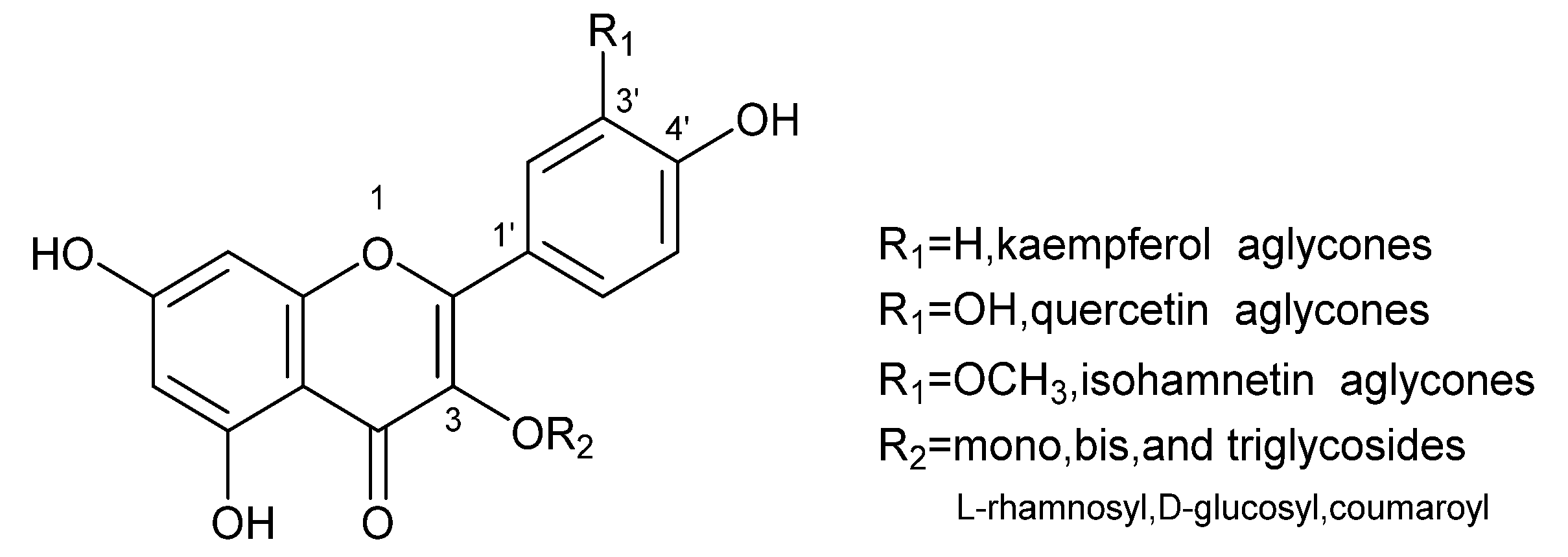
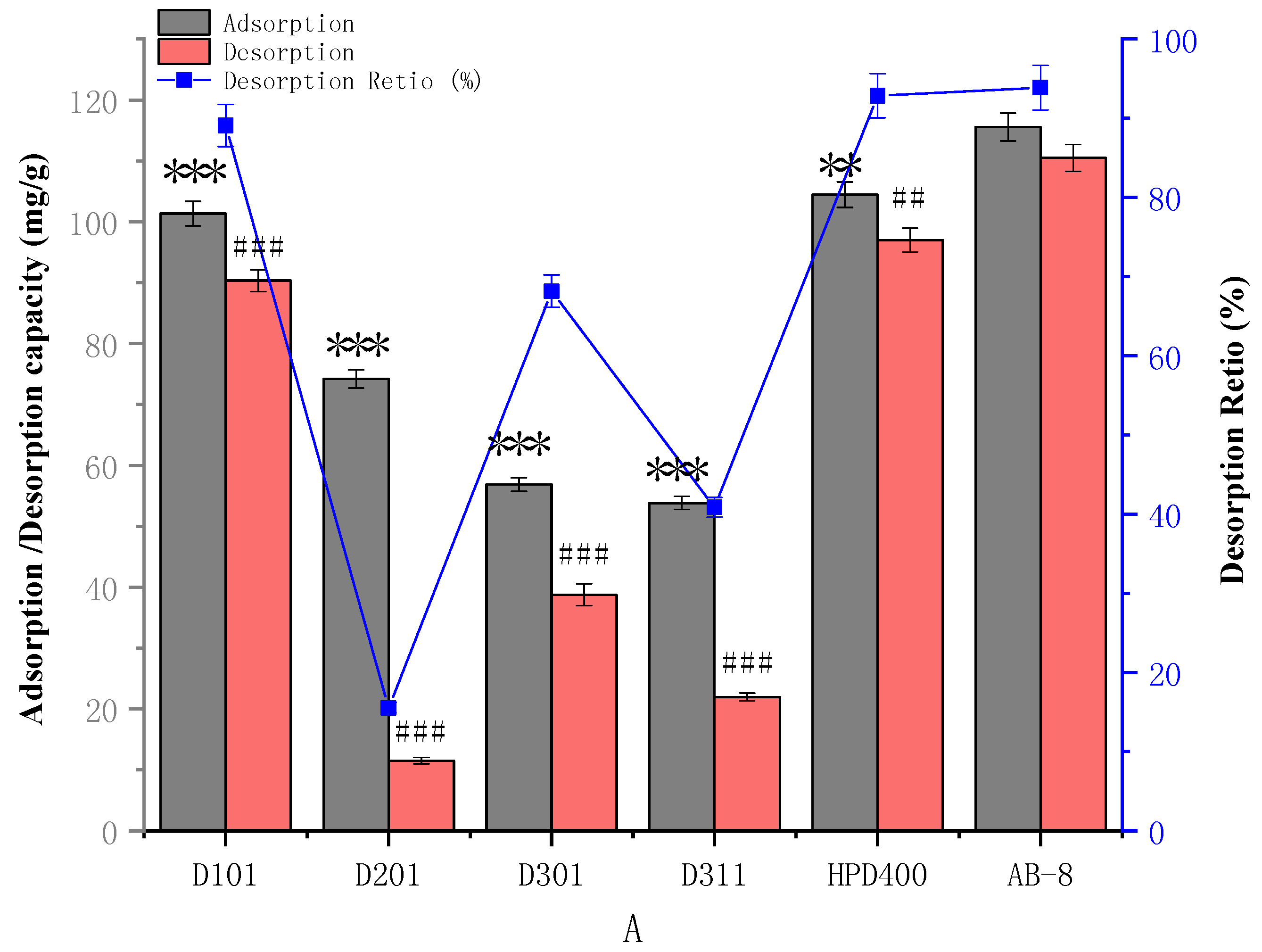
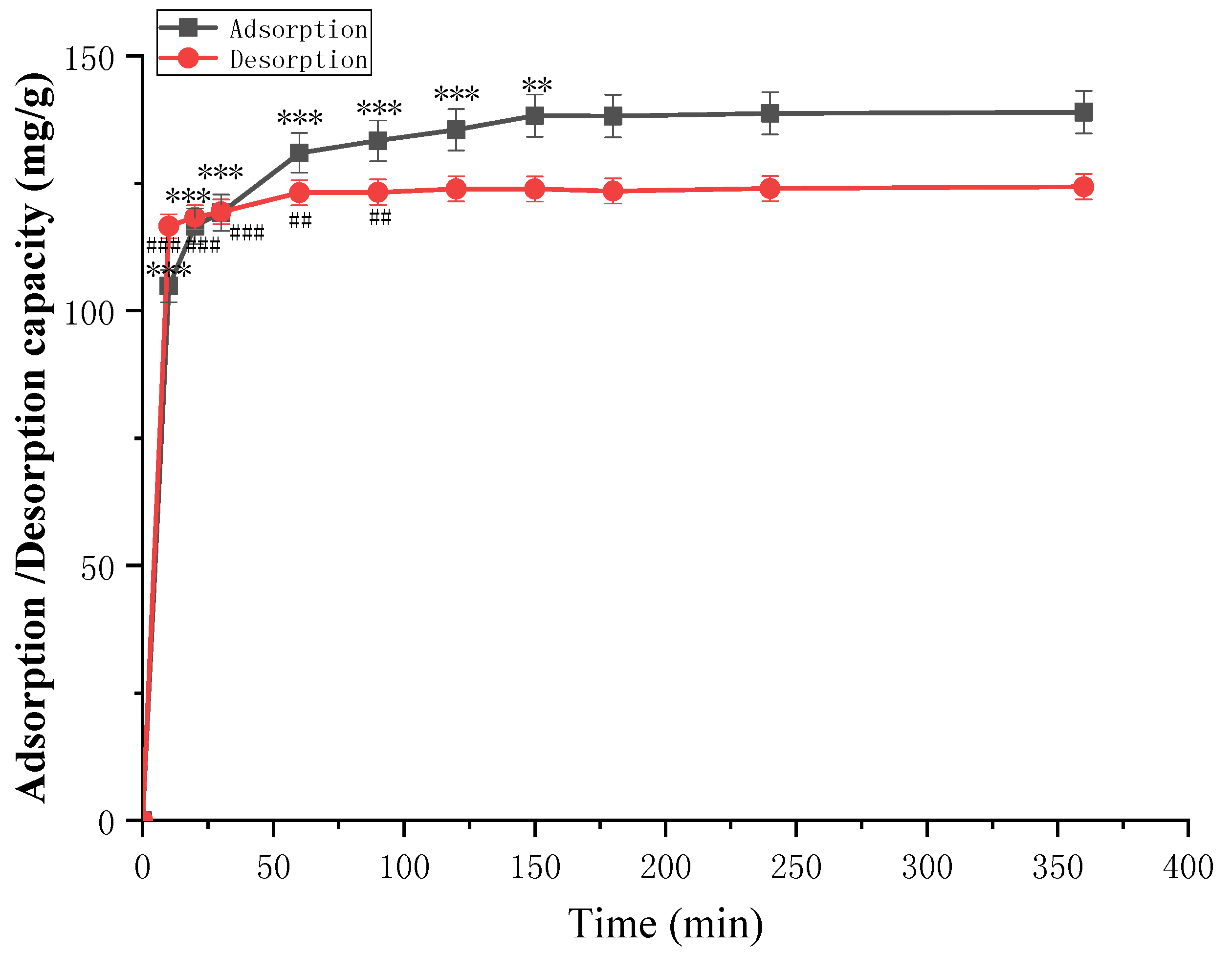
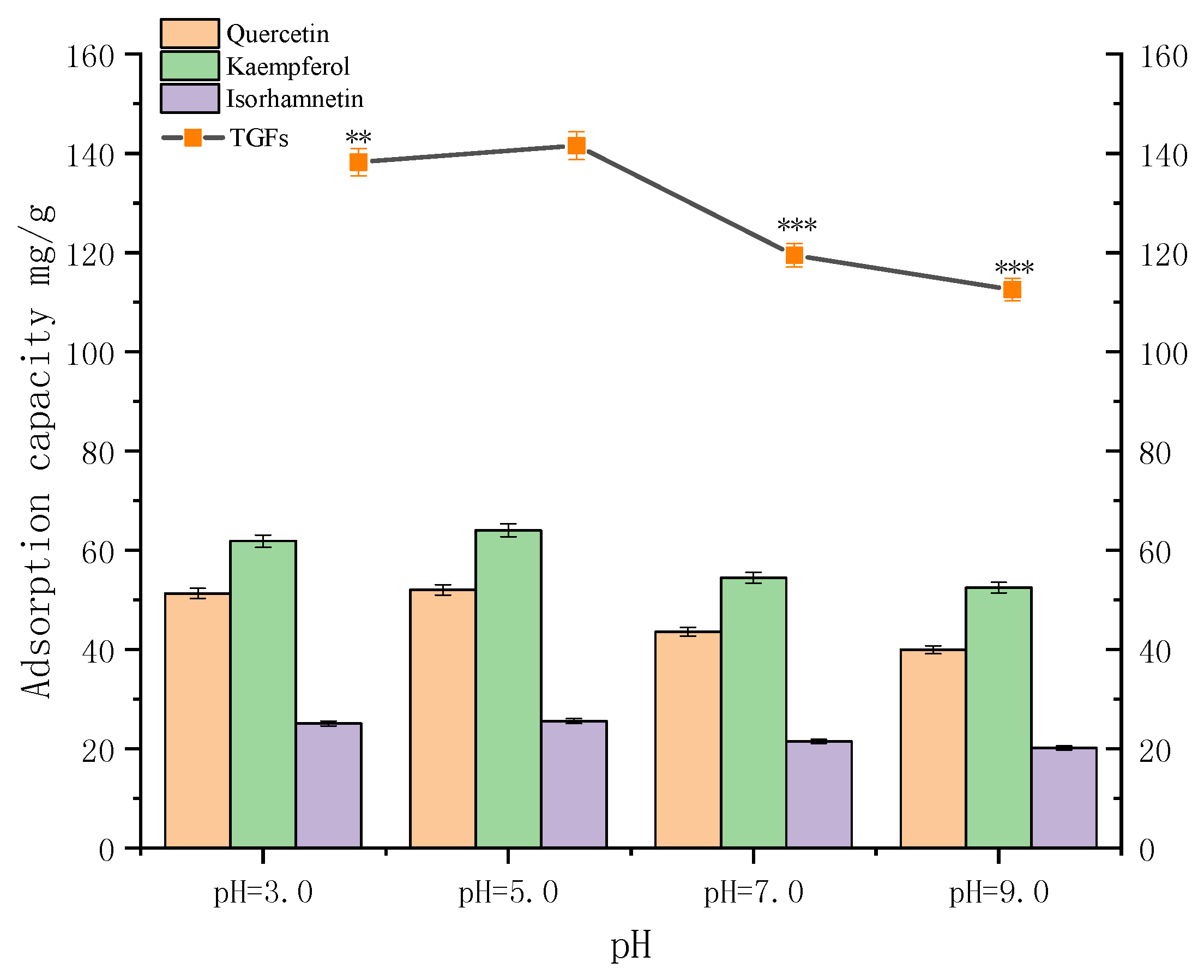


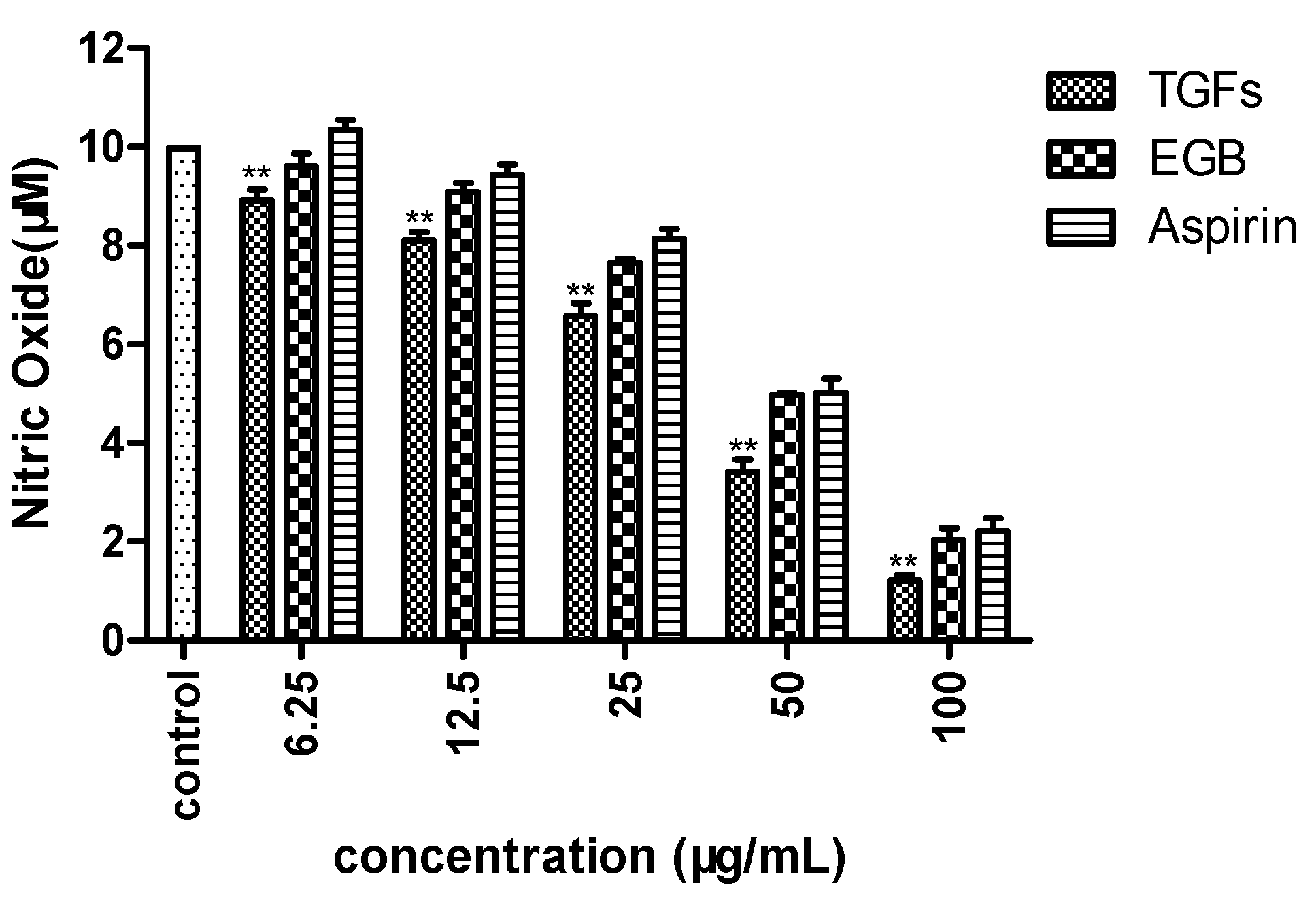
| Trade Name | Surface Area (m2/g) | Average Pore Diameter (nm) | Particle Diameter (mm) | Bulk Density (g/mL) | Type | Moisture Content (%) |
|---|---|---|---|---|---|---|
| D101 | 500–550 | 9–11 | 0.30–1.25 | 0.80–0.85 | No-polar | 66.61 |
| D201 | ≥650 | 15–20 | 0.30–1.25 | 0.65–0.75 | Strong-base anion | 49.43 |
| D301 | 350–400 | 15–20 | 0.30–1.25 | 0.65–0.72 | Weak-base anion | 52.52 |
| D311 | 350–430 | 15–20 | 0.32–1.25 | 0.70–0.80 | Weak-base anion | 47.33 |
| AB-8 | 450–520 | 13–14 | 0.30–1.25 | 0.65–0.75 | Weak-polar | 64.46 |
| HPD400 | ≥650 | 10–15 | 0.30–1.25 | 0.65–0.70 | Polar | 58.24 |
| T(°C) | Langmuir Equation | R2 | |
| quercetin | 25 °C | Qe = (146.67Ce)/(8.04 + Ce) | 0.9974 |
| 30 °C | Qe = (132.14Ce)/(7.61 + Ce) | 0.9998 | |
| 35 °C | Qe = (141.43Ce)/(6.52 + Ce) | 0.9991 | |
| kaempferol | 25 °C | Qe = (205.73Ce)/(8.43 + Ce) | 0.9946 |
| 30 °C | Qe = (170.32Ce)/(6.97 + Ce) | 0.9923 | |
| 35 °C | Qe = (184.15Ce)/(6.05 + Ce) | 0.9899 | |
| isorhamnetin | 25 °C | Qe = (118.65Ce)/(9.78 + Ce) | 0.9916 |
| 30 °C | Qe = (77.90Ce)/(6.46 + Ce) | 0.9900 | |
| 35 °C | Qe = (94.99Ce)/(6.00 + Ce) | 0.9750 | |
| TGFs | 25 °C | Qe = (462.73Ce)/(24.97 + Ce) | 0.9936 |
| 30 °C | Qe = (383.81Ce)/(21.39 + Ce) | 0.9903 | |
| 35 °C | Qe = (433.71Ce)/(18.98 + Ce) | 0.9637 | |
| T(°C) | Freundlich Equation | R2 | |
| quercetin | 25 °C | Qe = 26.55Ce0.472 | 0.9974 |
| 30 °C | Qe = 31.73Ce0.358 | 0.9820 | |
| 35 °C | Qe = 28.90Ce0.491 | 0.9861 | |
| kaempferol | 25 °C | Qe = 32.53Ce0.526 | 0.9946 |
| 30 °C | Qe = 39.33Ce0.386 | 0.9895 | |
| 35 °C | Qe = 35.50Ce0.514 | 0.9651 | |
| isorhamnetin | 25 °C | Qe = 13.62Ce0.660 | 0.9946 |
| 30 °C | Qe = 16.34Ce0.449 | 0.9750 | |
| 35 °C | Qe = 16.22Ce0.600 | 0.9563 | |
| TGFs | 25 °C | Qe = 39.10Ce0.545 | 0.9978 |
| 30 °C | Qe = 55.89Ce0.395 | 0.9871 | |
| 35 °C | Qe = 43.66Ce0.536 | 0.9280 |
© 2018 by the authors. Licensee MDPI, Basel, Switzerland. This article is an open access article distributed under the terms and conditions of the Creative Commons Attribution (CC BY) license (http://creativecommons.org/licenses/by/4.0/).
Share and Cite
Zhang, L.; Wu, T.; Xiao, W.; Wang, Z.; Ding, G.; Zhao, L. Enrichment and Purification of Total Ginkgo Flavonoid O-Glycosides from Ginkgo Biloba Extract with Macroporous Resin and Evaluation of Anti-Inflammation Activities In Vitro. Molecules 2018, 23, 1167. https://doi.org/10.3390/molecules23051167
Zhang L, Wu T, Xiao W, Wang Z, Ding G, Zhao L. Enrichment and Purification of Total Ginkgo Flavonoid O-Glycosides from Ginkgo Biloba Extract with Macroporous Resin and Evaluation of Anti-Inflammation Activities In Vitro. Molecules. 2018; 23(5):1167. https://doi.org/10.3390/molecules23051167
Chicago/Turabian StyleZhang, Lihu, Tingting Wu, Wei Xiao, Zhenzhong Wang, Gang Ding, and Linguo Zhao. 2018. "Enrichment and Purification of Total Ginkgo Flavonoid O-Glycosides from Ginkgo Biloba Extract with Macroporous Resin and Evaluation of Anti-Inflammation Activities In Vitro" Molecules 23, no. 5: 1167. https://doi.org/10.3390/molecules23051167
APA StyleZhang, L., Wu, T., Xiao, W., Wang, Z., Ding, G., & Zhao, L. (2018). Enrichment and Purification of Total Ginkgo Flavonoid O-Glycosides from Ginkgo Biloba Extract with Macroporous Resin and Evaluation of Anti-Inflammation Activities In Vitro. Molecules, 23(5), 1167. https://doi.org/10.3390/molecules23051167




